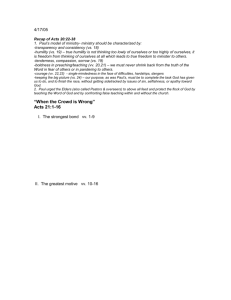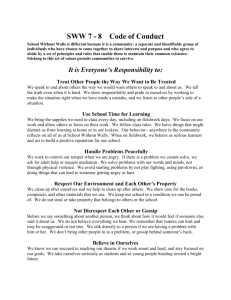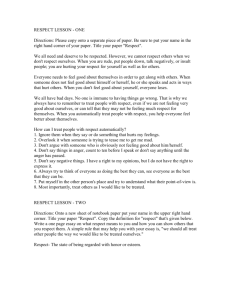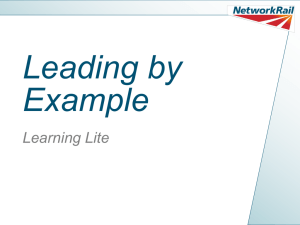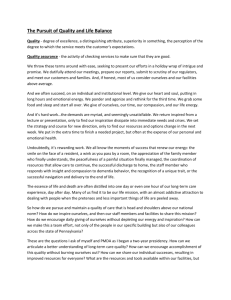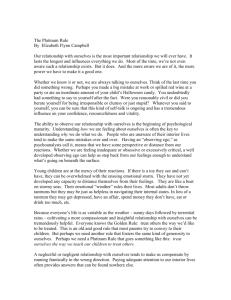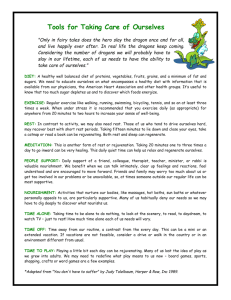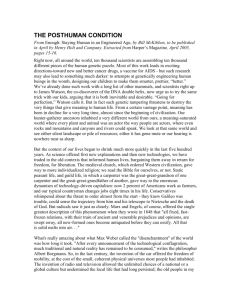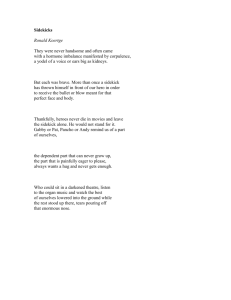Leading for Organizational Renewal
advertisement
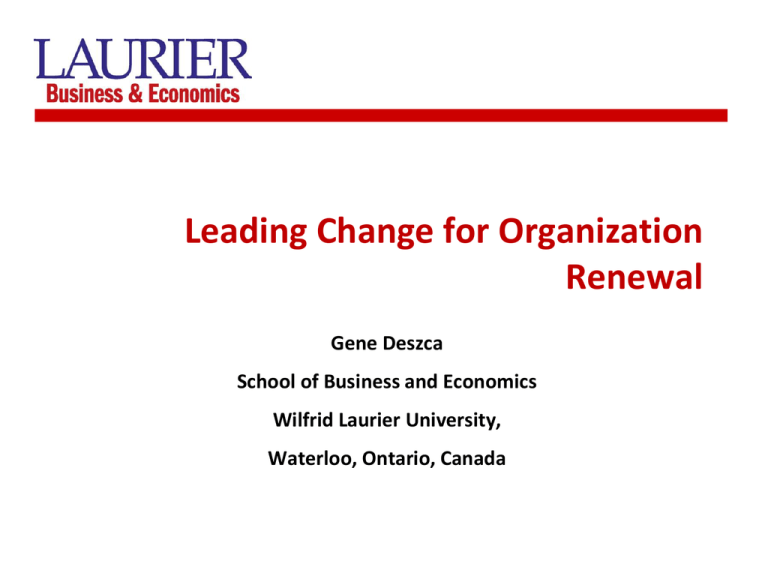
Leading Change for Organization Renewal Gene Deszca School of Business and Economics Wilfrid Laurier University, Waterloo, Ontario, Canada Agenda • The basic change model • Barriers to successful change • Five ways we limit ourselves • HOW to change • WHAT to change • You as change agent Organization Change is: A planned alteration of organizational components to improve the effectiveness of the organization. • Components include: mission and vision, strategy, goals, structure, processes & systems, technology & people • Enhanced effectiveness increases our ability to generate value for those they serve The Basic Change Model – K. Lewin UNFREEZE CHANGE REFREEZE Re-gel?? Your Experience With Change Management • So it’s easy?? • Does it work this way? • What gets in the way? Barriers to Recognizing the Need for Change • Past successes • Existing culture • Current vision • Leadership practices • Embedded systems and processes The above can lead to active inertia, groupthink, and other impediments to critical judgment and action Barriers to Successful Change • Thesis: • We have seen the enemy and the enemy is us! • In too many situations, our perceptions, attitudes and beliefs block us from successful organization change. Five Ways We Limit Ourselves 1. Flawed analysis • Need to deal with both the How and What of change • Need both an “inside out” and “outside in” focus 2. Lack of self awareness - blind spots Five Ways We Limit Ourselves 3. Failure to integrate head, heart and hand approaches to change • Head factors - the cognitive elements – persuasion of need for change based on logical arguments • Heart factors are affective elements – persuasion based on emotion to build buy-in and commitment • Hand factors are action elements – the engagement of people in change through their active involvement Five Ways We Limit Ourselves 4. We assume that money is the tool of choice for motivating people • Money may work but it brings the body but not the soul. Better to create a powerful, compelling vision 5. We confuse ambivalence for resistance. We get defensive and we view resistance as "bad” • We assume those with different ideas are wrong • Ambivalence and Resistance contains information that we need to understand and tap into. Back to The Change Models The How of Change – Beckhard and Harris Change Management: The How of Change Why Change? Determining the need for change Determining the degree of choice about whether to change Defining the desired future state Describing the present state Getting from here to there: Assessing the present in terms of the future to determine the work to be done Managing during the transition state Back to The Change Models The What of Change – Nadler and Tushman Organizational Congruence Model TRANFORMATION PROCESS INPUT ENVIRONMENT (P.E.S.T.) RESOURCES HISTORY/ CULTURE S T R A T E G Y INFORMAL STRUCTURE & PROCESS SYSTEMS LEVEL FORMAL STRUCTURE WORK PEOPLE OUTPUT UNIT/GROUP LEVEL INDIVIDUAL LEVEL Organizational Congruence Model TRANFORMATION PROCESS INPUT ENVIRONMENT (P.E.S.T.) RESOURCES HISTORY/ CULTURE S T R A T E G Y INFORMAL STRUCTURE & PROCESS FORMAL STRUCTURE WORK PEOPLE OUTPUT SYSTEMS LEVEL UNIT/GROUP LEVEL INDIVIDUAL LEVEL What’s Required to be a Successful Change Leader? 1. Keen capacity to assess and anticipate the external environment • Develop diverse networks for ideas, information & support 2. Rich understanding of organizational systems & processes, power structures & stakeholder networks 3. Excellent communication skills • Capacity to frame vision 4. Driving passion for action, yet patient and persistent • Well developed sense of timing and tactics • Ability to assess and manage risk Characteristics Of A Change Leader (cont.) 5. Tolerance for ambiguity and risk taking 6. Emotional maturity and courage • Willingness to hire & listen to employees who will stand up and tell you what they really think 7. Self confidence and optimism 8. Honest and trustworthy, able to inspire confidence 9. Deep understanding of themselves & their impact 10. Curiosity and a strong desire to learn
